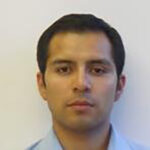ISEK Around the World
An online event to connect the ISEK community across the world over a 17-hour period
The “ISEK Around the World” online event will consist of a series of scientific presentations and discussions, held across different time-zones. The first event, Thursday, October 26 2023, will include hosts in Japan, Ireland, Canada, and Mexico, ensuring continuity over a 17-hour time-window to facilitate the participation of members from across the globe.
These events will provide an opportunity to strengthen and expand the ISEK community, for current and future members to connect and engage with each other, regardless of their location or career stage. The meeting will feature four sessions, with speakers ranging from students and ECRs to senior researchers. In addition to the sessions, Twitter thread discussions will be hosted based on the event theme.
ISEK Around the World is organized by the Early Career Researcher Committee
Thursday, October 26, 2023
Japan, Australia
Moderated by Kohei Watanabe

Tony Blazevich
Edith Cowan University
Tony Blazevich is a Professor of Biomechanics and lecturer in Clinical Neurophysiology at Edith Cowan University, Australia. His research examines the neuromuscular adaptations to acute and chronic physical training in non-clinical (including sports), clinical and elderly populations. This includes interrogation of adaptations in spinal and supraspinal plasticity, muscle size and architecture, and muscle-tendon integration, and their effects on physical function.
Strength in the Spinal Cord: The importance of motoneuronal persistent inward currents in muscle force production in relation to exercise training, ageing, and fatigue
Muscle force production requires a descending activating signal to arrive from the central nervous system. Like other neurons, motoneurons contain specialised voltage-sensitive channels that allow persistent (ongoing) inward flows of calcium and sodium ions (persistent inward currents; PICs) that significantly affect neuron firing behavior. Current evidence suggests that muscle forces would be reduced to less than half if the amplification of descending signals by PICs didn’t occur in our motoneurons. In this presentation, I will show data from several studies that indicates that PIC function is impaired during ageing but may be (at least partly) reversed through exercise training, at least using high-resistance (strength) type protocols. I will also show that improvements in physical function in older individuals after a short period of strength training are correlated with increases in PIC strength, suggesting a causal relationship. Finally, I will examine the potential role in PIC failure in the loss of force after fatiguing exercise as well as its association with the loss of central neural drive and possible effects on sense of effort. These data will highlight the need to target PIC function with exercise in ageing as well as situations where fatigue manifests.

Momoko Yamagata
Kansai Medical University
Momoko Yamagata received her Ph.D. in Human Health Science at Kyoto University in 2019 and works at Kansai Medical University as an assistant professor. She is also a physical therapist and is interested in biomechanics and motor control related to rehabilitation.
Application of the Musculoskeletal Model to Patients with Knee Osteoarthritis
Knee osteoarthritis (OA) is a common disease inducing knee pain and physical dysfunction. It is known that repeated knee contact force (KCF) in daily life promotes the progression of knee OA, and KCF evaluation is crucial to predict and prevent OA progression at an early stage. External knee adduction moment (KAM) has been widely used as an alternative measure of KCF on the medial compartment (KCFmed), whereas recently musculoskeletal models allow a detailed estimation of KCFmed. Our previous study has revealed that KCFmed in patients with severe symptoms was larger and shifted more inward than that in patients with mild symptoms. In another study exploring whether KCFmed-related indices predict knee surgery in the future, we have found that patients who will undergo knee surgery suppressed KCFmed magnitudes, but they received sustained force on a localized area of the medial compartment during gait. These findings implied that the detailed evaluations of KCFmed magnitude and distribution in addition to KAM would provide crucial information about the progression of knee OA. In this seminar, I will introduce our previous studies in detail and talk about how to use this technique for patients with knee OA in the future.

Masamichi Okudaira
Iwate University
Masamichi Okudaira, PhD, completed his doctoral work in sports biomechanics at the University of Tsukuba. Dr. Okudaira spent a year as a postdoctoral researcher at the Laboratory of Neuromuscular Biomechanics Chukyo University. Dr. Okudaira specializes in the development of neuromuscular function in children.
Development of Motor Unit Firing Rate and its Association with Neuromuscular Function in Children
Neural function in developing children is believed to be weaker than in adults based on the morphological growth of the nervous system. However, recent studies have shown that the motor unit firing rate is not as small as we expected in children compared to adults. Therefore, the contribution of neural development into the development of muscle strength and force accuracy is still open to investigation in developing children.
In this presentation, we will present the longitudinal study that investigated the association between the strength development and the change in motor unit firing rate over a 10-month period in male youth soccer players. In addition, I will also introduce the recent study that investigated the relationship between force accuracy and motor unit firing activity in elementary school-aged children (6-12 years old). These studies provide a novel understanding of motor unit firing activities and neural function in developing children.

Nikki Kelp
University of Queensland
Nikki is nearing the completion of her PhD journey at the University of Queensland in the Neuromuscular Biomechanics Lab, where she has devoted her time exploring the neuromechanical determinants of muscle shape change and gearing. Nikki’s experience spans both academic and industry settings, working to advance our understanding of the factors that influence a muscle’s mechanical response to force, with future goals of applying this knowledge to help understand, prevent, and treat muscle deficits associated with aging, disease, and disuse.
Altered Contractile Environment Leads to Differences in Shape Change and Activation Patterns Between the Synergistic Triceps Surae Muscles
Skeletal muscle force production goes beyond the fibre level, as muscles undergo significant shape changes during contractions. Although these changes are thought to expand a muscle’s functional range, current insights mainly rely on isolated muscle experiments during constant lengths and maximal loading. Synchronous three-dimensional muscle deformations transmit external force onto surrounding muscles within a synergistic group, likely affecting their ability to change shape and altering their mechanical behaviour during a contraction. We aimed to investigate the impact of alterations in the contractile environment on muscle shape change, activation, and fibre dynamics in the triceps surae muscles. Integrating B-mode ultrasound and surface electromyography, we conducted isometric plantarflexion contractions at different knee angles to influence the neuromechanical contributions of the medial and lateral gastrocnemius and soleus muscles. We compared the muscle shape change patterns at the same relative soleus activation levels with the knee extended versus the knee flexed. Our findings demonstrate that the contractile environment, owing to the relative activation levels of muscles, played an important role in modulating the timing and magnitude of muscle shape change. The study addresses critical gaps in our understanding of the complex interplay between a muscles’ in vivo contractile environment and mechanical behaviour.
Thursday, October 26, 2023
Ireland, South Africa, Germany, the Netherlands
Moderated by Madeleine Lowery

Richard Carson
Trinity College Dublin; Queens University Belfast
Richard Carson is Chair in Cognitive Neuroscience of Ageing in the School of Psychology and the Institute of Neuroscience at Trinity College Dublin. His research focuses upon human brain plasticity, with a particular focus upon changes that occur across the lifespan. It is geared towards the development of methods to maintain and restore cognitive and movement function in later life.
What Can Molecular Biology and Genetics Tell Us About the Human Neuromuscular System?
In highlighting the challenges posed by idiosyncratic variations in behaviour when one is seeking to resolve through experimental methods the enduring problems of human motor control and learning, Jack Adams bemoaned “individual differences that reside in the cesspool of the error term”. Elsewhere Adams expressed the view that explanatory models must first be concerned with general processes, rather than individual differences in these processes. The argument to be advanced here is essentially the reverse. It is that the study of individual differences can contribute in a pre-eminent manner to our understanding of the human neuromuscular system. The more specific assertion is that, if individual variations in the transcription of a gene or of a system of genes account for a substantial portion of observed differences in the expression of a phenotype (e.g., rate of motor learning), it can be inferred that physiological processes regulated by the product of that gene (or system of genes) play a determining role. By focusing on the relationships which exist between genetic polymorphisms with effects on dopamine neurotransmission, and the retention of acquired motor skills, the viability of this general approach is illustrated.

Yumna Albertus
University of Capetown
Dr. Yumna Albertus, an Associate Professor at the University of Cape Town’s Faculty of Health Sciences, is a mid-career researcher specializing in rehabilitation, neurophysiology, and biomechanics within the realm of sports science. She holds the role of Director at the Health, Physical Activity, Lifestyle, and Sports Research Centre (HPALS). Dr. Albertus leads a dynamic biomechanics laboratory and co-founded Acino Tech, a UCT spin-off company with two patented biomechanics devices. She has been recognized with UCT’s Research Leadership Award in 2022. Yumna currently Chairs the South African Society of Biomechanics and was recently elected on the Executive Board of the International Society of Biomechanics. Albertus passionately supports research in Spinal Cord Injury Rehabilitation and extends her expertise to Paralympic coaches and orthopedic surgeons.
Celebrating Progress and Potential: The Impact of ISEK on Neuromuscular Physiology Advancements in South Africa
In this presentation, I will showcase the transformative insights and breakthroughs that emerged from my experiences at ISEK conferences, catalyzing my journey in EMG and biomechanics research for applications in rehabilitation, sports medicine, high-performance contexts, and injury risk management. We will navigate through our 15-year research voyage, highlighting our accomplishments, and highlight research that we engaging on over the next five years.

Filiz Ates
University of Stuttgart
Filiz Ates earned her Ph.D. from Bogazici University in Istanbul in 2013. She has conducted post-doctoral research at institutions including the University of Nantes, France, and Waseda University, Japan. Prior to joining the University of Stuttgart, she worked at Mayo Clinic, Rochester, MN, USA. Currently, she leads the experimental biomechanics group at the University of Stuttgart, focusing on skeletal muscle mechanics, orthopaedics, and neuromuscular research.
Ultrasound Shear Wave Elastography: A Promising Imaging Modality to Characterize Skeletal Muscles in vivo
Shear wave elastography (SWE) is an ultrasound-based technique that has gained significant importance in recent years. It enables the quantification of local mechanical properties by measuring shear wave propagation velocity within tissue. Shear wave velocity is directly related to tissue stiffness and applied tensile loads. SWE has been shown to capture both passive and active muscle mechanics. Yet, the potential of SWE in characterizing skeletal muscle behavior and its applicability in detecting muscular changes are subjects of ongoing research.
In this presentation, we will explore the potential of SWE for identifying mechanical properties in various human muscles, discuss its limitations, propose potential solutions, and highlight its potential for monitoring age-related changes and adaptation to muscular diseases such as facioscapulohumeral muscular dystrophy and myasthenia gravis.

Antonio Gogeascoechea
Universite Twente
Antonio Gogeascoechea is a final-year PhD candidate at the University of Twente, the Netherlands. His research focuses on developing person-specific neuro-musculoskeletal models able to predict how the human body responds and adapts to external interventions. Throughout his PhD, Antonio’s work has received international recognition, winning conference awards at ISEK (2020) and IEEE Brain/IEEE EMBC (2021) and being selected as a finalist at IEEE EMBC (2021) and WCB (2022).
In Vivo Characterization of Motor Unit Firing and Contractile Properties: Towards Model-Based Closed-Loop Modulation of Spinal Motor Circuitries
Interfacing with alpha-motoneurons (MNs), the final common pathway for transmitting neural commands to skeletal muscles, is central for understanding motor control. Recent advancements in high-density electromyography decomposition techniques facilitate the in vivo characterization of alpha-MNs, offering new possibilities to enhance rehabilitation methods.
This presentation focuses on two complementary studies highlighting the pivotal role of alpha-MNs in evaluating the impact of external interventions and expanding our understanding of neuro-musculoskeletal interactions.
In the first study, we quantified changes in alpha-MN firing behavior resulting from trans-spinal direct current stimulation (tsDCS) in spinal cord-injured subjects. By employing coherence analyses, our findings suggest a reduction in common synaptic input to alpha-MNs after tsDCS. However, the implications of these alterations on force generation remained unanswered.
To understand how alpha-MN function affects the musculoskeletal system, we established a link between motor unit (MU) firing and contractile properties in our second study. By discriminating a continuum diversity of MU types, we estimated twitch responses and employed them to predict force via neuro-musculoskeletal modelling.
In a rehabilitation context, our frameworks provide a promising avenue for monitoring training-induced changes at the alpha-MN, muscle, and joint levels, simultaneously. This can help optimize neuro-modulative strategies to restore natural function in impaired individuals.
Thursday, October 26, 2023
Canada, USA, Brazil
Moderated by Greg Pearcey

Julie Côté
McGill University
Dr. Côté is a Full Professor in Biomechanics in the Department of Kinesiology and Physical Education of McGill University, in Montreal, Canada. She is also the inaugural Director of the Sylvan Adams Sports Science Institute of McGill University. With background in motor control and biomedical engineering, she leads the McGill Biomechanics of Occupations and Sports laboratory at McGill.
Measuring what the eyes can’t see: Sex-specific manifestations of repetitive motion-induced fatigue: from the lab to the workplace to the field of sport
The last 20 years have seen great technological advances transform biomechanics research, and enhance our ability to precisely measure how the body can execute complex repetitive tasks. This new precision is necessary to understand the subtle adjustments that can be made to repetitive movement execution to delay fatigue and avoid injury. I will present some programmatic research that has stemmed from laboratory questions, methodologies and findings, and have led to applied projects “in the wild” (workplace and sports field). During the same period of time, a growing field of work has aimed to determine to what extent men and women’s biomechanics may differ. I will present our latest research investigating sex (biology)-based mechanisms and their impact on repetitive movement biomechanics, which ultimately aims to help uncover sex and gender similarities and differences in movement patterns and their associations to disparities in injury risks of men and women.

Laura McPherson
Washington University
Laura McPherson, DPT, PhD is a biomedical engineer, physical therapist, and neuroscientist who is an Assistant Professor of Physical Therapy and Neurology at Washington University in St. Louis. Her research focuses on identifying pathological neural control of movement following neurological injury, determining how it relates to specific clinical motor deficits, and investigating how it can be targeted to improve the efficacy of neurorehabilitation interventions.
Pathophysiology of voluntary motor commands in patients with multiple sclerosis identified using reverse engineering of motor unit population discharge.
Voluntary motor commands originate cortically and are shaped at all levels of the neuraxis, culminating as three types of inputs to spinal motoneurons: excitatory, inhibitory, and neuromodulatory. These components must be appropriately balanced on a task-specific basis to produce skilled motor control. Disruption of their balance has deleterious effects on motor output, evidenced by work in several clinical populations. We study how voluntary motor commands are disrupted in multiple sclerosis (MS), a neurodegenerative disease that often results in motor deficits. MS is heterogeneous in terms of lesion locations, symptoms, and disease progression, making systematic research of neurophysiological correlates of motor dysfunction difficult. We can feasibly estimate aspects of the voluntary motor command in humans using reverse engineering of motor unit discharge recorded non-invasively. The goal of our ongoing study is to characterize these components in MS to gain insight into neural mechanisms of motor dysfunction and their heterogeneity across patients.

Matheus Gomes
University of São Paulo
Dr. Matheus Gomes is an assistant professor at the School of Physical Education and Sport of Ribeirão Preto at the University of São Paulo. He holds a Master in Human Movement Science from the São Paulo State University and a PhD in Health Sciences Applied to the Locomotor System from the University of São Paulo. His main research is focused on the kinesiological aspects related to electromyographic activity, hypertrophy, and strength gain in resistance training; and biomechanical and neuromotor aspects related to human movement.
Muscle Contraction Intensity During Co-contraction Training
Co-contraction training represents an unconventional approach to resistance training, characterized by the simultaneous activation of both agonist and antagonist muscles around a specific joint, such as the elbow flexors and extensors. Existing research has shown that co-contraction training can lead to notable improvements in strength and hypertrophy. Nonetheless, the absence of external resistance complicates the assessment of training intensity during co-contraction exercises. During this presentation, I will share our research findings on the quantification of muscle contraction intensity, utilizing electromyographic data from both upper and lower limb muscles, in the context of co-contraction training among individuals spanning different age groups. Furthermore, I will explore the feasibility of employing a subjective perception of effort scale as an alternative method for gauging the intensity of muscle contractions in the context of co-contraction training.

Ellen Zambalde
University Campinas
Dr. Ellen Zambalde recently obtained a PhD in Biomedical Engineering and she is fascinated by the neuromuscular system. Currently, she works as a researcher at Samsung Research Center in Brazil.
Approximate entropy of motor unit discharge and muscle force signals
Approximate entropy (ApEn) is used to measure force signal regularity and it is influenced by its parameters, and factors such as vibrotactile stimulation. In the present study, we carried out human experiments and computer simulations to investigate how sinusoidal vibrotactile stimulation influences the force ApEn and the smoothed compound spike trains (sCST) from the input and output of the motor neuron pool. Results showed a decrease in force CoV and an increase in force ApEn due to vibration. In the lower band (0-5 Hz), the correlation between the output sCST ApEn and force ApEn increases as the number of motor units included in the CST increases. Force ApEn was influenced by changes in the signal-to-noise ratio (SNR) since the addition of a secondary command (vibration) produces a less variable global common input. Therefore, force ApEn can be influenced by changes in the synaptic commands to the motor neuron pool.
Thursday, October 26, 2023
Mexico, USA, Colombia, Chile
Moderated by Alberto Perez Sanchez

Minoru Shinohara
Georgia Institute of Technology
Minoru “Shino” Shinohara earned a Ph.D. in Multidisciplinary Sciences from the University of Tokyo and received training in the neural control of movement at the University of Colorado at Boulder and the Pennsylvania State University. He is the Director of the Human Neuromuscular Physiology Laboratory and an Associate Professor in the School of Biological Sciences at the Georgia Institute of Technology, and serves as Secretary on the ISEK Council. His main research interests encompass the neural control and adaptation of human motor control in humans, using EMG, neurostimulation, and other methodologies.
Modulating Neuromotor Function Through Noninvasive Autonomic Intervention
Little attention has been given to the modulation of neuromuscular activity by autonomic nerve activity, despite abundant research demonstrating the opposite relationship. This presentation will explore the potential effects of noninvasive interventions targeting the autonomic nervous system on the neuromotor system in humans. One such intervention is the application of lower body negative pressure (LBNP) while in the supine position. The LBNP procedure enhances sympathetic nerve activity through baroreceptor unloading. An alternative approach is to apply transcutaneous vagus nerve stimulation (tVNS). Electrical stimulation of the afferent branch of the vagus nerve located at the outer ear is believed to upregulate central neuromodulators such as norepinephrine in the cortex. Changes in neuromotor excitability and adaptation to motor skill training resulting from these noninvasive autonomic interventions will be discussed.

Mario Fernando Jimenez Hernandez
Universidad del Rosario
Mario is currently a professor at Universidad del Rosario. His research interest includes human-robot-environment interaction, assistive and rehabilitation technologies, social robotics, and control strategies.
Human-Robot-Environment Interaction Strategies for Smart Walkers
Smart Walkers or intelligent walkers are robotic devices that may be used to improve the balance and locomotion stability of people with lower-limb weakness or poor balance. Such devices may also offer support for cognitive disabilities and for people who cannot safely use conventional walkers, as well as allow interaction with other individuals and with the environment. In this context, there is a significant need to involve the environment information into the Smart walkers’ navigation strategies. Several control strategies have been developed to establish a safe and natural locomotion using smart walkers. Some of them include social aspects, sensors to detect and avoid obstacles, detection of the user motion intention, and actuators to establish a good speed for locomotion. In addition, these strategies can use interfaces to communicate information to the user. In this sense, visual, auditive, and haptic channels may conform to a multimodal interface to human-robot communication. The use of multimodal interfaces together with the control strategies allows cognitive and physical interaction between the user and the smart walker, in order to establish a natural and intuitive Human-Robot-Environment Interaction for smart walkers.

Jorge Airy Mercado-Gutierrez
Instituto Nacional de Rehabilitación Mexico
Researcher in Medical Sciences in the Medical Engineering Research Division of the National Institute of Rehabilitation “Luis Guillermo Ibarra Ibarra”, where he carries out research and development of technologies in neuroengineering, with emphasis on systems for motor rehabilitation and assistance based on Functional Electrical Stimulation, instrumentation, and biosignal processing, and Brain-Computer Interfaces. He earned a Doctorate in Electrical Engineering in the bioelectronics section at CINVESTAV-IPN, a Master of Science in Biomedical Engineering at the Universidad Autónoma Metropolitana, and a bachelor’s degree in Electronics at the Benemérita Universidad Autónoma de Puebla.
Research & Development of Functional Electrical Stimulation-based technologies for Motor Rehabilitation at the Mexican National Institute of Rehabilitation
In this presentation, we will talk about the work that we have been developing since 2016 at the Medical Engineering Research Division, Instituto Nacional de Rehabilitación “Luis Guillermo Ibarra Ibarra”, in Mexico City, on technologies, protocols and interventions aimed to motor rehabilitation of patients with central nervous system injuries, such as stroke and spinal cord injury. Our work is based on two key techniques: Functional Electrical Stimulation and Human-Machine Interfaces, the latter being based on Electroencephalography (Brain-Computer Interface) and Electromyography signals (Biofeedback control). We will talk about the development efforts and rehabilitation approaches we have undertaken in these areas, mainly directed towards upper limb rehabilitation, and more recently towards the lower limb (gait rehabilitation). Also, we will present some key methodological aspects and results regarding the design, development and testing of hardware, software, and algorithms (for signal processing and control), and a pilot feasibility study where of our efforts in pre-clinical and clinical studies involving post-stroke patients, where we have obtained some promising results even in chronic stages. Finally, we will discuss some current and future trends to be incorporated in our devices and protocols.

Macarena Soldan
MEDS Clinica
Macarena Soldan is a physical therapist who earned her degree at Universidad Mayor, Chile. Afterwards she took her master’s degree in biomedical engineering at Universidad de Valparaiso, Chile. She currently works at the Innovation Center in Clínica MEDS, where they use biomechanical technologies to rehabilitate patients who have undergone an orthopedic surgery.
From Muscle Atrophy quantification to Motor Unit decomposition, an ACLr follow-up
For many years we have been rehabilitating patients after surgery, most of them have good results and are able to return to their daily activities with no delay, but some of them do not. This group of patients face many problems including pain, muscle atrophy, diminished muscle force, functional lost, and even an increased risk of re-injury and an increased risk in developing knee arthrosis. Over the last three years we have been following for 12 months more than 200 patients, measuring mechanical and physiological variables associated with muscle atrophy, our results show us that 6 months after surgery patients still exhibit muscle atrophy markers, affecting their return to sports activities and increasing the risk of reinjury. In our road to understand this phenomenon we have started to look at alterations in force steadiness and changes in motor unit properties using motor unit decomposition techniques, results are still preliminary, but we hope to improve our understanding of muscle atrophy to provide better care for our patients.
Speaker Bio
Presentation Title
Abstract
